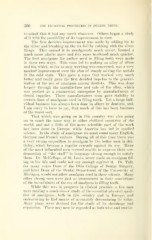Page 622 - My FlipBook
P. 622
300 THE TECHNICAL PROCEDURES IN FILLING TEETH.
to admit that it had any merit whatever. Others began a study
of it with the possibility of its improvement in view.
Tlie first decisive improvement was made b.v adding tin to
the silver and breaking up the tin foil by rubbing with the silver
filings. This caused it to amalgamate much easier, formed a
much more plastic mass and this mass hardened much quicker.
The first amalgams the author used in filling teeth were made
in these two ways. This soon led to making an alloy of silver
and tin, which, so far as easy working was concerned, was a very
marked improvement over the plan of simply mixing the metals
in the cold state. This gave a mass that worked very much
better and really gave the first decided impetus to the general-
ization of the use of amalgam among dentists. This was done
largely through the manufacture and sale of the alloy, which
was pushed as a commercial enterprise by manufacturers of
dental supplies. These manufacturers soon gave stability to
certain lines of amalgams used in filling teeth. Yet a large indi-
vidual lousiness has always been done in alloys by dentists, and,
I am sorry to have to say, that much of this has been business
of the worst sort.
That which was going on in this country was also going
on in much the same way in other civilized countries of the
world, and not a little of the more scientific part of the work
has been done in Europe, while America has led in applied
science. In the study of amalgams we must count many English,
German and French writers. During all of this time there was
a very strong opposition to amalgam l)y the better men in den-
tistry, which became a regular crusade against its use. Many
of the most influential men seemed unable to express their con-
demnation of "the stuff" in language strong enough to satisfy
them. Dr. McKellops, of St. Louis, never made an amalgam fill-
ing in his life and could not say enough against it. Dr. Taft,
for many years Dean of the Ohio College of Dental Surgery,
and later Dean of the Dental Department of the University of
Michigan, would not allow amalgam used in these schools. Many
other strong men were just as pronounced in their convictions
of the harmfulness of the use of amalgam in filling teeth.
While this was in progress in clinical practice, a few men
were making a much closer study of the essential physical quali-
ties of amalgams , both in this country and in Europe, and
endeavoring to find means of accurately determiniug its value.
Many plans were devised for the study of its shrinkage and
expansion. These may now be regarded as both wise and unwise.


